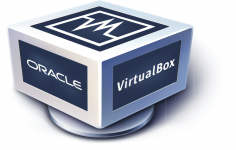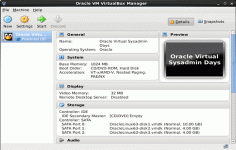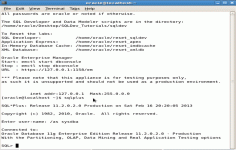 VirtualBox 2.1.0
VirtualBox 2.1.0
Oracle - (Open Source)
VirtualBox is an easy and elegant solution for those who want to control a computer from another computer.
VirtualBox offers virtualize your operating system (OS) guests on a host machine. Called hypervisor, the application supports Windows OS X, Linux, Mac, Solaris, FreeBSD, etc.. as host, Mac OS X missing the call as a guest.
It also includes a remote access via HTTP protocol, convenient for demonstrations on a clean system. The ability to manage multiple states of the system is particularly interesting and its interface is very simple.
Virtualization solutions allow installing an operating system on a virtual machine using the resources of the host PC , thus enjoying very good performance. In the genre, several solutions are known for their ease of use, such as VMware Workstation , Parallels Desktop or Microsoft Virtual PC 2007 SP1.
A virtual machine is a useful way to use two operating systems simultaneously and harmless to the host computer. There is the possibility to install Linux on a virtual machine on Windows and vice versa .
- Title:
- VirtualBox 2.1.0
- File Size:
- 38.6 MB
- Requirements:
- Windows XP / Vista / Windows7 / XP64 / Vista64 / Windows7 64 / Windows8 / Windows8 64
- Language:
- en-us
- License:
- Open Source
- Date Added:
- 16 Dec 2008
- Publisher:
- Oracle
- Homepage:
- http://www.oracle.com
- MD5 Checksum:
- 79087028034236E93075E464C81A6886
This version is a major update. The following major new features were added:
* Support for hardware virtualization (VT-x and AMD-V) on Mac OS X hosts
* Support for 64-bit guests on 32-bit host operating systems (experimental; see user manual, chapter 1.6, 64-bit guests, page 16)
* Added support for Intel Nehalem virtualization enhancements (EPT and VPID; see user manual, chapter 1.2, Software vs. hardware virtualization (VT-x and AMD-V), page 10))
* Experimental 3D acceleration via OpenGL (see user manual, chapter 4.8, Hardware 3D acceleration (OpenGL), page 66)
* Experimental LsiLogic and BusLogic SCSI controllers (see user manual, chapter 5.1, Hard disk controllers: IDE, SATA (AHCI), SCSI, page 70)
* Full VMDK/VHD support including snapshots (see user manual, chapter 5.2, Disk image files (VDI, VMDK, VHD), page 72)
* New NAT engine with significantly better performance, reliability and ICMP echo (ping) support (bugs #1046, #2438, #2223, #1247)
* New Host Interface Networking implementations for Windows and Linux hosts with easier setup (replaces TUN/TAP on Linux and manual bridging on Windows)
In addition, the following items were fixed and/or added:
* VMM: significant performance improvements for VT-x (real mode execution)
* VMM: support for hardware breakpoints (VT-x and AMD-V only; bug #477)
* VMM: VGA performance improvements for VT-x and AMD-V
* VMM: Solaris and OpenSolaris guest performance improvements for AMD-V (Barcelona family CPUs only)
* VMM: fixed guru meditation while running the Dr. Web virus scanner (software virtualization only; bug #1439)
* VMM: deactivate VT-x and AMD-V when the host machine goes into suspend mode; reactivate when the host machine resumes (Windows, Mac OS X & Linux hosts; bug #1660)
* VMM: fixed guest hangs when restoring VT-x or AMD-V saved states/snapshots
* VMM: fixed guru meditation when executing a one byte debug instruction (VT-x only; bug #2617)
* VMM: fixed guru meditation for PAE guests on non-PAE hosts (VT-x)
* VMM: disallow mixing of software and hardware virtualization execution in general (bug #2404)
* VMM: fixed black screen when booting OS/2 1.x (AMD-V only)
* GUI: pause running VMs when the host machine goes into suspend mode (Windows & Mac OS X hosts)
* GUI: resume previously paused VMs when the host machine resumes after suspend (Windows & Mac OS X hosts)
* GUI: save the state of running or paused VMs when the host machine’s battery reaches critical level (Windows hosts)
* GUI: properly restore the position of the selector window when running on the compiz window manager
* GUI: properly restore the VM in seamless mode (2.0 regression)
* GUI: warn user about non optimal memory settings
* GUI: structure operating system list according to family and version for improved usability
* GUI: predefined settings for QNX guests
* IDE: improved ATAPI passthrough support
* Networking: added support for up to 8 Ethernet adapters per VM
* Networking: fixed issue where a VM could lose connectivity after a reboot
* iSCSI: allow snapshot/diff creation using local VDI file
* iSCSI: improved interoperability with iSCSI targets
* Graphics: fixed handling of a guest video memory which is not a power of two (bug #2724)
* VBoxManage: fixed bug which prevented setting up the serial port for direct device access.
* VBoxManage: added support for VMDK and VHD image creation
* VBoxManage: added support for image conversion (VDI/VMDK/VHD/RAW)
* Solaris hosts: added IPv6 support between host and guest when using host interface networking
* Mac OS X hosts: added ACPI host power status reporting
* API: redesigned storage model with better generalization
* API: allow attaching a hard disk to more than one VM at a time
* API: added methods to return network configuration information of the host system
* Shared Folders: performance and stability fixes for Windows guests (Microsoft Office Applications)
Related software
0.1/5 from 1030 users


